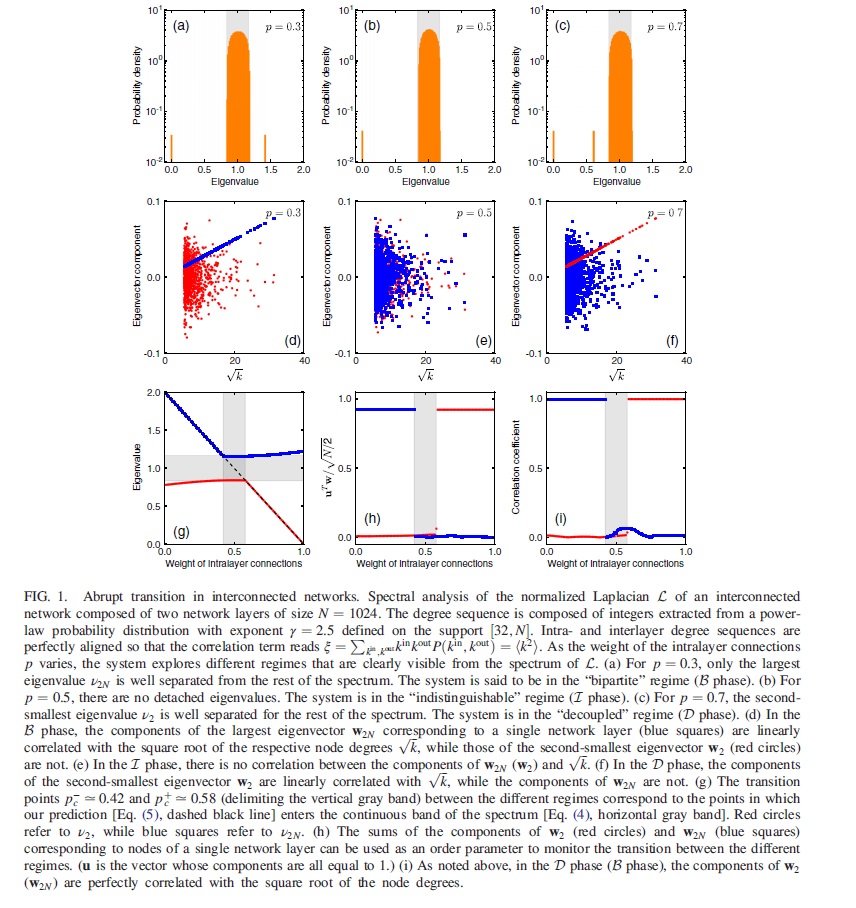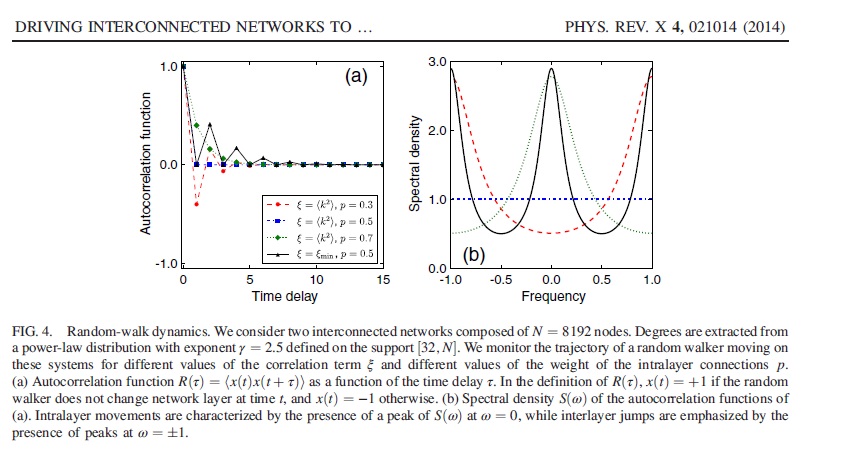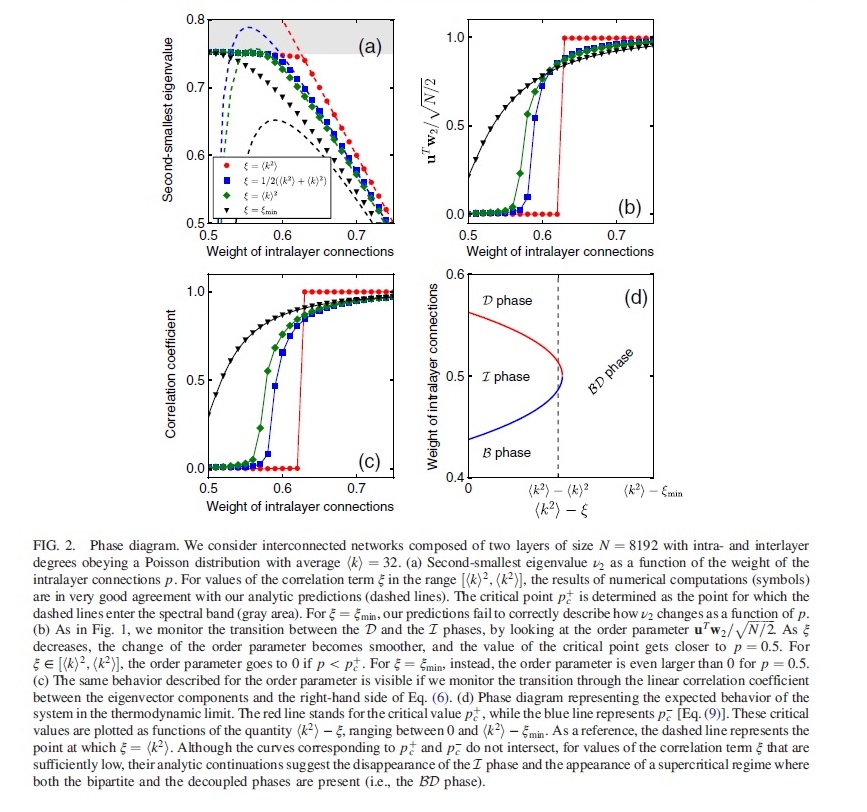Filippo Radicchi在PHYSICAL REVIEW X (4, 021014,2014)上发表了关于耦合网络对信息传播的影响的研究工作,摘要如下:
Networks in the real world do not exist as isolated entities, but they are often part of more complicated structures composed of many interconnected network layers. Recent studies have shown that such mutual dependence makes real networked systems potentially exposed to atypical structural and dynamical behaviors, and thus there is an urgent necessity to better understand the mechanisms at the basis of these anomalies. Previous research has mainly focused on the emergence of atypical properties in relation to the moments of the intra- and interlayer degree distributions. In this paper, we show that an additional ingredient plays a fundamental role for the possible scenario that an interconnected network can face: the correlation between intra- and interlayer degrees. For sufficiently high amounts of correlation, an interconnected network can be tuned, by varying the moments of the intra- and interlayer degree distributions, in distinct topological and dynamical regimes. When instead the correlation between intra- and interlayer degrees is lower than a critical value, the system enters in a supercritical regime where dynamical and topological phases are no longer distinguishable.
Nature Physics在2014年6月第10卷以Improve your virality为题,对该文进行了评述,全文如下:
Messages or videos posted on the internet can attract a lot of attention by being ‘liked’, tweeted, blogged and e-mailed. But how do things go viral? Understanding information transfer in the real world is far from trivial. One has to consider not just how information disperses through a complex network, but also how it spreads between many different networks, all of which are intertwined. Take social media, for example. Facebook, Twitter and Instagram — to name just a few —could all be thought of as separate networks, but in reality they’re all intimately linked, simply by virtue of the fact that they share common users. How, then, does information diffuse through this network of networks? Conceiving the problem as a single multilayered network (in which each layer represents a different social network), Filippo Radicchi has shown that information transfer in this complex system is directed by the correlation between connections in the different layers (Phys. Rev. X 4, 021014; 2014). Radicchi looked at two interconnected network layers with randomly placed lateral (intralayer) and vertical (interlayer) connections. He explored the diffusion processes for different relationships between the number of neighbours that a node has within a network and the number of neighbours that it has in the other network. Perhaps counterintuitively, he found that a strong Improve your virality ©DJAHAN/ISTOCKPHOTO/THINKSTOCK correlation between lateral and vertical connections does not make diffusion across the whole system more efficient. Instead, information spreads faster in the opposite case: when, for example, abundant connections in one layer corresponds to sparse connections in the other. This suggests that if a strong correlation existed between, say, the Twitter and Instagram networks such that users had similar followings in both, then it would be more probable for information to travel either within one network or between the two. If, however, there was an inverse correlation — an often-followed Twitter user gaining little or no traction on Instagram — information could spread simultaneously between and within both networks. Quite apart from revealing how to become the next internet sensation, this study has implications for many other interconnected systems. It suggests a simple design principle for inducing rapid diffusion through a multilayered network: make lateral hubs distinct from vertical hubs. On the other hand, if it’s containment you’re after, it pays to build strong correlations between connections in different layers.



原文链接:
/ckfinder/userfiles/files/PhysRevX_4_021014.pdf





